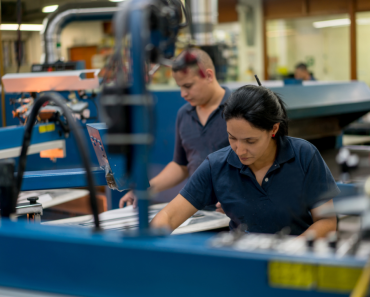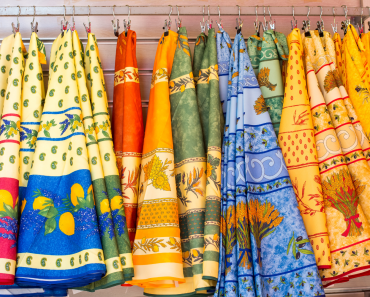It’s Earth Day, and we’re thrilled to rejoice in our favourite planet, which is also the only one we’ve got (so far). From nature-capturing prints to legislation that may appear dull but saves lives, the textile printing sector has a lot more than one incentive to think about on this day (and our planet) as a whole. Here are some ideas for showing respect for mother nature on her particular day, as well as every other day.
From the Outside Looking In
Plants, flowers, creatures, and vistas have always inspired designers. Prints based on plants, flowers, animals, and views never seem to go out of style. In our last blog post, we talked about the leopard print phenomenon, but recent runway presentations included even more exciting references to the natural world. The new collection, for example, focuses on nature both outside and inside with floral and animal-themed prints as well as vegan textiles made from fruit! Indoor interest in the outdoors is also evident; timeless nature-themed house décor that just feels proper reflects this.
Come Out and Have Fun!
With all due respect to decorating your space with floral designs, if you truly want to appreciate nature at its best, you should put on some shoes and go outside! To assist you to do that without having to worry about the harm it may do to your wardrobe, today’s printing technology is capable of producing UV fastness and rub and wash resilience that much higher. You’ll be able to spend as much time outside as you like while still enjoying printed textiles on your garden furniture for years.
To Save Resources, Try Using Fewer Materials
Let’s take this a step further. It’s simple to convey the commercial value of producing excellent goods from the outset. However, achieving superior results isn’t just beneficial for business; it’s also good for the environment. The resources wasted during low-quality production are numerous and include not only the materials used in but also those printed with and the utilities required for both. We make not only company owners and customers happy, but also nature, by elevating our standards and achieving a higher standard of performance. It’s either a win-win scenario or a horribly lose-lose situation, depending on the degree of quality you choose.
A Little Can Make a Tremendous Difference
The on-demand economy has necessitated that manufacturers offer a fast response to the latest fashion trends. Fashion collections have shrunk considerably as a result of the on-demand economy (after all, you can’t get photo’d wearing the same outfit twice on Instagram).
This new strategy also has an environmental benefit, with shops generating far less waste when they don’t sell anything. We still need to invest more in collecting and recycling clothes worn, but printing faster and smaller collections is a good start.
The Legal System in Place
Last but not least, we’ll look at environmentally-minded regulation in the textile printing sector. We’ve seen sustainability standards rise all around the world, even in countries that appear to be lagging behind when it comes to such legislation. Kornit doesn’t wait for someone else to tell us we should care about the environment and put out the effort on our own to stay one step ahead of the sustainability race.


